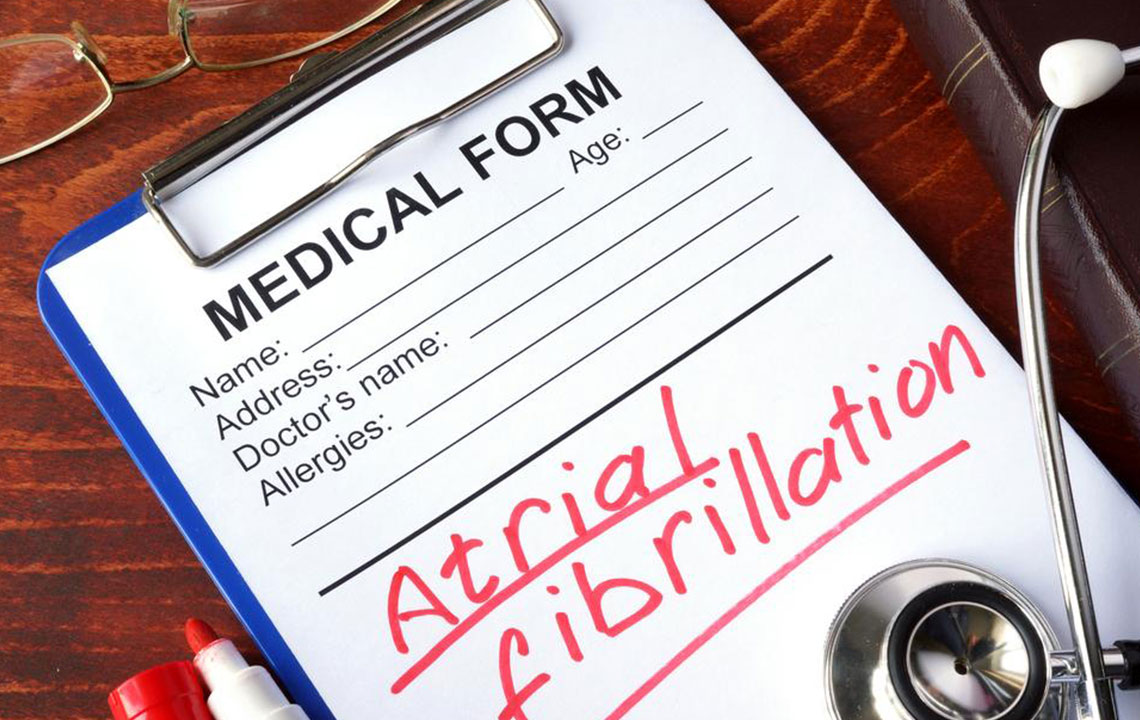Comprehensive Guide to Atrial Fibrillation: Recognizing Symptoms, Diagnosis, and Effective Management Strategies
Atrial fibrillation (AFib) is a common heart rhythm disorder that can cause serious health complications if not detected early. This comprehensive guide explores the symptoms, diagnosis methods, types of AF, and modern treatment options such as medication, cardioversion, and catheter ablation. Early recognition and management are crucial for preventing stroke and heart failure, emphasizing the importance of regular health checks and lifestyle adjustments. Learn how to identify AF symptoms and understand the latest approaches to effective treatment for better heart health.

Understanding Atrial Fibrillation: Symptoms, Diagnosis, and Management
In today's health landscape, atrial fibrillation (AF), often called AFib, stands out as one of the most common and concerning heart rhythm disorders. Despite its prevalence, many people remain unaware of what AF is, how it develops, or how to identify its symptoms early. This lack of awareness can lead to delayed diagnosis and increased risk of serious complications like stroke or heart failure. With over half a million new cases diagnosed annually in the United States alone, understanding AF is crucial for early intervention and effective treatment.
Atrial fibrillation involves an abnormal electrical signal in the heart's atria— the upper chambers of the heart—causing them to beat irregularly and often rapidly. This irregular heart rhythm hampers the efficient pumping of blood into the ventricles, which are responsible for circulating blood throughout the body. As a result, blood flow becomes sluggish, increasing the risk of blood clots forming within the atria. If these clots travel to the brain, they can cause strokes, highlighting the importance of prompt diagnosis and management.
Many individuals with AF may not experience noticeable symptoms, especially during the early stages. Routine medical checkups often reveal irregular heartbeats during physical exams or ECG tests. However, symptoms become more apparent and severe as the condition progresses. Recognizing these signs can lead to earlier treatment, reducing the likelihood of complications.
Common Symptoms and Signs of AF
While some individuals with atrial fibrillation remain asymptomatic, others may notice a range of symptoms. These can vary from mild to severe, often impacting daily activities and overall quality of life. The most frequently reported signs include:
Irregular heartbeat or pulse
Feeling of fluttering or pounding in the chest (palpitations)
Persistent fatigue or tiredness
Weakness and lethargy
Dizziness, lightheadedness, or feeling faint
Chest discomfort or pain
Confusion or difficulty concentrating
Episodes of fainting (syncope) or near-fainting
Shortness of breath during physical activity or stress
Because many people may not experience obvious symptoms, regular pulse checks are recommended, especially for those at higher risk due to age or underlying health issues. Using an affordable, handheld stethoscope or a smartwatch with heart rate monitoring features can help detect irregularities in heartbeat patterns. Early detection allows for timely intervention, potentially preventing severe health consequences.
Types of Atrial Fibrillation
Understanding the different classifications of AF is crucial to managing and choosing appropriate treatment strategies. The main types include:
Paroxysmal AF: Defined by episodes that last less than seven days, often resolving on their own or with medications. These intermittent episodes can occur sporadically, making them harder to detect.
Persistent AF: Lasts longer than seven days and typically requires medical interventions such as electrical cardioversion or medications to restore normal rhythm. Persistent AF may be more challenging to control and maintain in a regular rhythm.
Permanent AF: Also known as longstanding or chronic AF, where the irregular rhythm is accepted by both patient and physician as ongoing. Although rhythm control strategies may be attempted, the focus shifts to managing symptoms and reducing stroke risk.
Diagnosis and Management of AF
Proper diagnosis of atrial fibrillation involves a combination of physical examinations, advanced diagnostic tools, and understanding patient history. Healthcare providers use electrocardiograms (ECG) as the primary method for detecting irregular heart rhythms. Continuous monitoring with Holter monitors or event recorders helps assess how often irregularities occur, especially in paroxysmal cases where episodes are sporadic.
Once diagnosed, treatment aims to restore and maintain normal heart rhythm, control the heart rate, and reduce the risk of stroke. Lifestyle changes play a foundational role in managing AF. These include adopting a heart-healthy diet, engaging in regular physical activity, managing stress, and avoiding stimulants such as caffeine or alcohol that can trigger episodes.
Medications are the cornerstone of AF management. Anti-arrhythmic drugs help maintain sinus rhythm, while beta-blockers or calcium channel blockers control heart rate. Blood thinners, like warfarin or newer anticoagulants such as dabigatran or rivaroxaban, are prescribed to prevent clot formation and subsequent strokes.
In some cases, procedural interventions are necessary. Electrical cardioversion is a common outpatient procedure that delivers controlled shocks to restore normal rhythm, with a success rate exceeding 95%. However, recurrence of AF is common, necessitating further management strategies. For persistent or refractory cases, catheter ablation procedures such as pulmonary vein isolation can offer long-term relief by destroying the aberrant electrical pathways responsible for AF.
Other treatments include surgical options and the implantation of devices like pacemakers or implantable cardioverter-defibrillators, especially in patients with coexisting heart conditions. Ongoing follow-up and personalized treatment plans are essential, as individual responses and risks vary significantly.
Overall, managing atrial fibrillation is a multi-faceted process that combines lifestyle adjustments, medication adherence, and sometimes invasive procedures. Regular check-ups and patient education about symptom recognition and treatment options are vital components of effective AF management. With advancements in medical technology, outcomes continue to improve, enabling many patients to lead active, healthy lives despite their condition.





